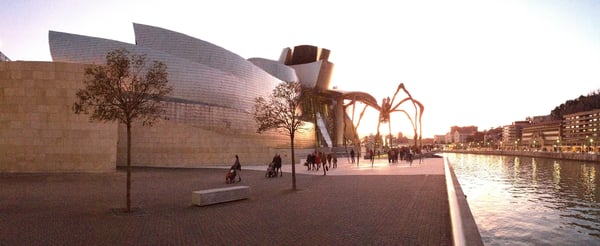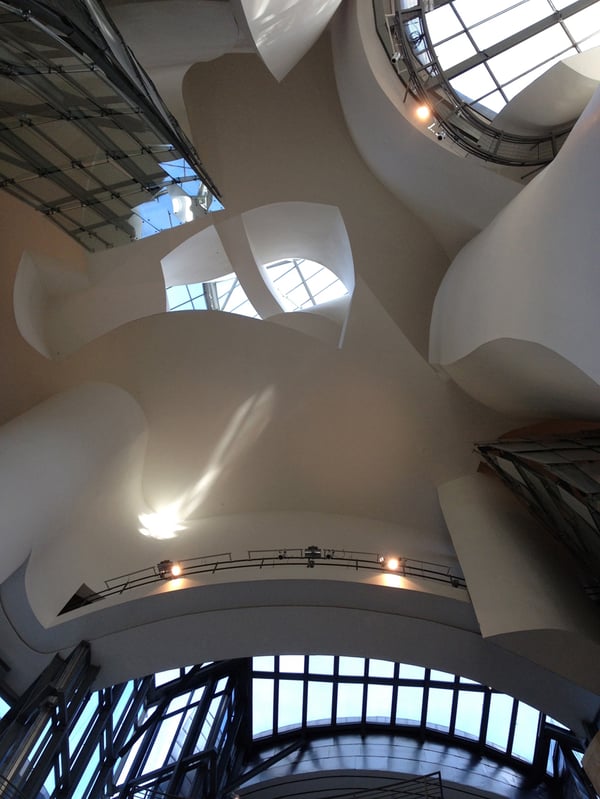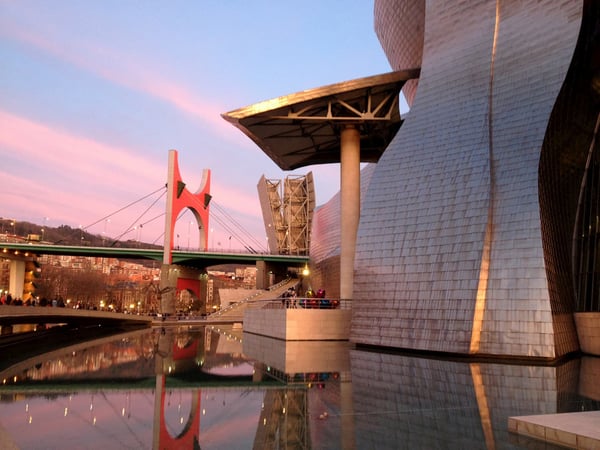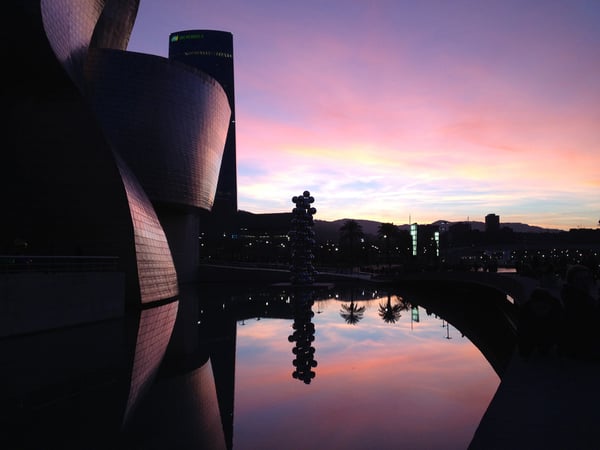Bilbao is somewhere we've had on our list of places to visit for a long time. Luckily, the opportunity to do so finally arose a few weeks ago during the trip Adam and I took to Southern Spain.
We walk northwards from Bilbao’s city centre towards the Nervión riverside and it brings us to the site of what could be described as one of the most important buildings in the city: The Guggenheim Museum of Bilbao.

An impressive statement to be sure, but the history of the building stands up to it. The Guggenheim was envisioned by the architect Frank Gehry in 1990 and construction was completed in 1997. The museum almost singlehandedly pushed the city into the process of deindustrialisation and, with this, made a large impact in reviving the region’s economy. This dramatic influence on the fortune of Bilbao gave wake to what is known in the architectural world as ‘The Bilbao Effect’, where a significant piece of architecture leads directly to a city’s transformation.

When we arrive at the Guggenheim our first act is to walk around the exterior with the aim of getting an overview and clearer understanding of the building. To begin with the museum does not seem different enough to justify its dramatic reputation; from street level it does not impose on us and is only a little higher than the buildings surrounding it. However, as we walk down the steps on the side around to the front of the building, the sheer scale of the architecture emerges. It ripples and shimmers under the sun, the angles of its titanium and glass walls catching the light and responding to the weather as it changes. The pool at the front of the building continues this trend, throwing more reflections onto the side walls, and the nearby architecture of the Salve Bridge casts similarly interesting reflections onto the river itself, contributing to the whole effect. It’s immediately clear that the building has aged well, and the titanium tiles are not dull or rough around the edges, reflecting the light in the same way we can only assume they used to when it was first built.

Stepping into the central interior space is amazing. The museum is built around a central full-height open space that is easy to navigate, and the buzz inside from the other visitors is tangible. The atrium above allows light to float all the way through the building and, combined with the way the architecture is built of lines that are not straight, we get the slightly unsettling feeling of everything inside being disconnected from each other, prompting us to ask how it manages to stay up at all. Looking down into the same space from the higher floors gives us a similar impression of weightlessness, as from that angle the walls seem to hover above the floor. Surprisingly the building is only three storeys high, although this is necessary to create the great internal gallery space, despite how big it looks from the outside.
This dramatic influence on the fortune of Bilbao gave wake to what is known in the architectural world as ‘The Bilbao Effect’, where a significant piece of architecture leads directly to a city’s transformation.
Not forgetting that the Guggenheim is a museum, the spaces for the art are vast, to the absolute benefit of the art within. Each piece is given room to breathe and has space enough around it to be seen in the best possible view. When we visited, the work of Niki de Saint Phalle was being exhibited, and her art felt comfortably at home in the space, especially her large scale Nanas.

After visiting the Guggenheim Museum of Bilbao, it is really not surprising to see how one building could have such a profound effect on an entire city. The exterior plays with light in a way that gives the entire construction an almost ethereal feel, the reflections playing with perceptions of weightlessness and the shape of twisted metal grounding the building in the city’s industrial past. The interior puts the art first, again using the southern Spanish sun to its greatest potential and allowing space to give the art room for the most powerful effect.
Frank Gehry’s design continues to blur the relationship between art and architecture even twenty years after its construction, and there is no doubt that it will continue to do so for years to come.



